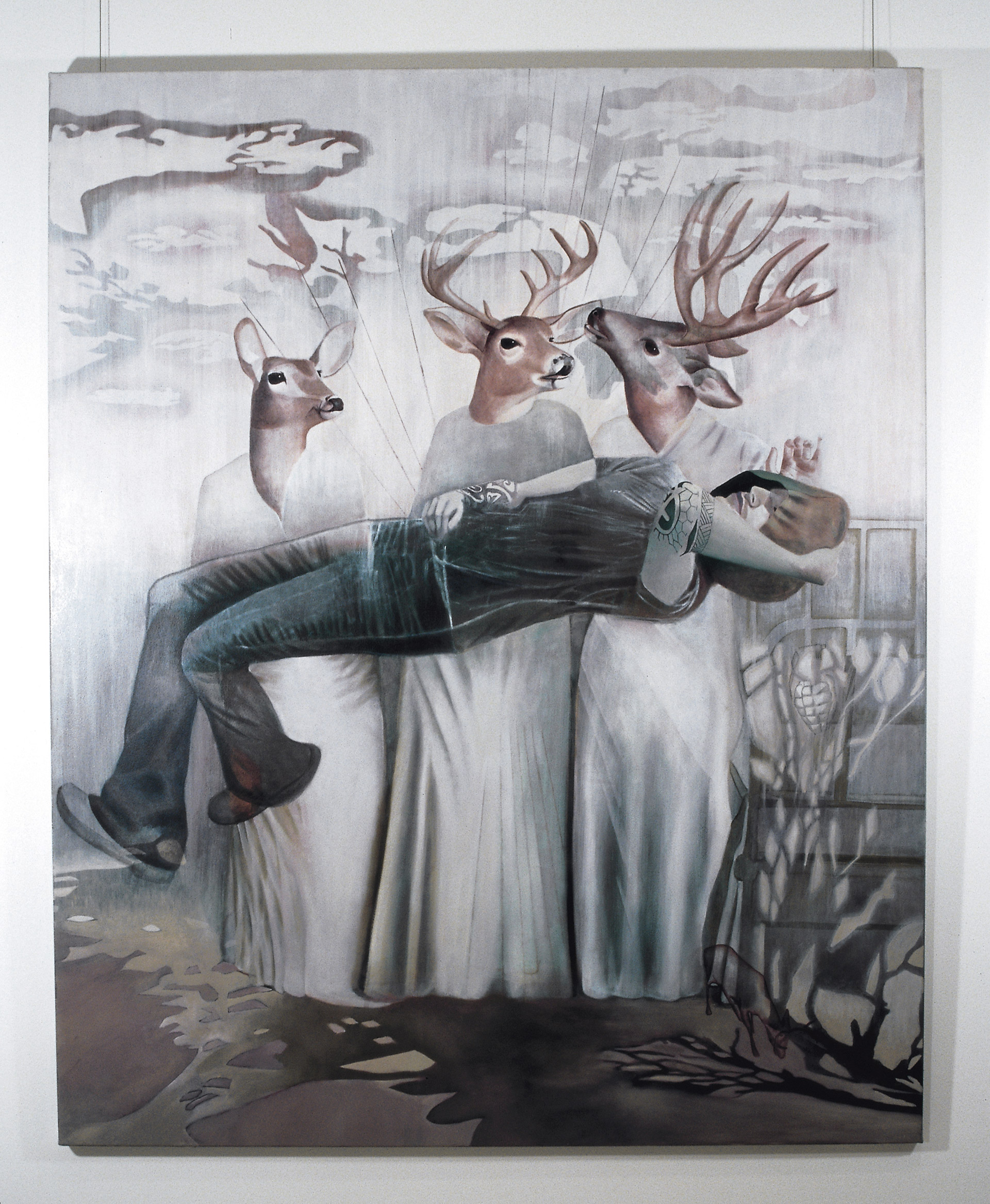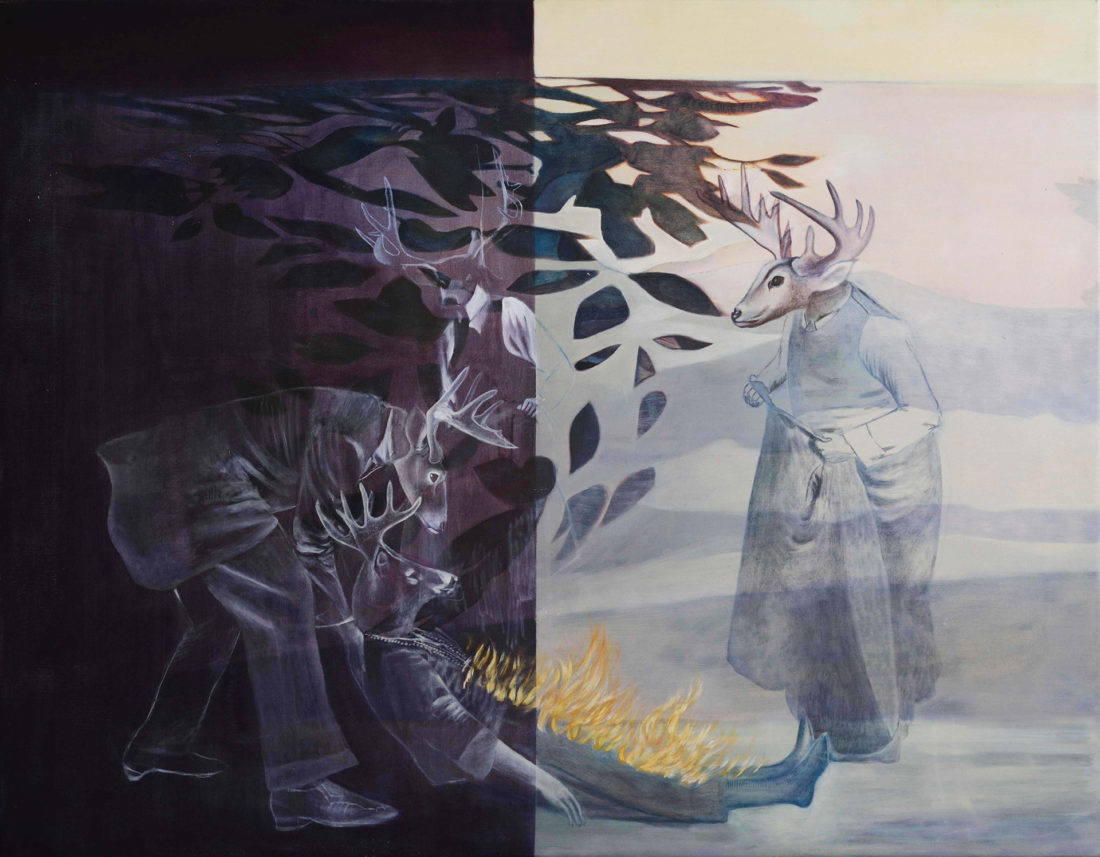Works from this exhibition were among seven original large-scale oil paintings exhibited in Australia’s premier exhibition of young artists. Depicting the transformation of material or matter, the works explore the materiality of things in seeking to produce affects whereby the evocative nature of oil paint depicts translucent and transparent forms, outlines, shadows and the diffusive layered tissues of membranes. Layers of paint build up strata and are superimposed in order to suggest archaeology and natural resources. Pathfinder Closing (2005) was reproduced on various platforms, publications and on a banner hung on the outside of the MCA building. Located on one of the world’s most spectacular sites on the edge of Sydney Harbour, the Museum of Contemporary Art has a vision – a commitment to innovative programming with ground-breaking exhibitions of contemporary art from Australia, the Asia-Pacific region and around the world. Primavera is the MCA’s annual exhibition of Australian artists aged 35 and under that uncovers new artistic talent.
Fenner, Fenner 2005, Primavera: Exhibition by Young Australian Artists, exhibition catalogue Museum of Contemporary Art (MCA) Curated by Felicity Fenner, it featured the works of 9 artists who explored new developments in painting. Monika Behrens, Madeleine Kelly, Fiona Lowry, Danie Mellor, Tom Mùller, Yukultji Napangati, Michelle Ussher, Pedro Wonaeamirri, Jemima Wyman. Primavera 2005: Young Australian Artists focused on new developments in painting. Including work by both Aboriginal and non–Aboriginal artists, the exhibition examined the ways in which painting at the time was engaging with a contemporaneous notion of existence, in contrast to the postmodernism of the 1980s and 1990s. The exhibition navigated issues both local and international, featuring arts practice that attempted to map our place, as individuals, as Australians and as global citizens.
In this exhibition curator Felicity Fenner sought to examine the complexity of the phrase ‘the lie of the land’. Originally used by colonisers in reference to the swift division of occupied territory, Fenner was attempting to explore how this origin could be translated to her own context.
Primavera is the Museum’s annual exhibition of Australian artists aged 35 years and under. Since 1992, the series has showcased the works of artists in the early stages of their career, many of whom have gone on to exhibit nationally and internationally.
Primavera was initiated in 1992 by Dr Edward Jackson AM and Mrs Cynthia Jackson AM and their family in memory of their daughter and sister Belinda, a talented jeweller who died at the age of 29.
Museum of Contemporary Art Australia (MCA) – 07 Sep 2005 – 13 Nov 2005
Muswellbrook Regional Arts Centre – 10 Feb 2006 -15 May 2006
Works by Madeleine Kelly in Primavera 2005 Primavera The Catalyst 2005 oil on polyester 83 x 94cm; Artificial Respiration Second Position 2003 Oil on gesso board 20 x 25.5cm; Choreography of War Reportage 2002 Oil on polyester 185 x 174cm; Hydration Tactic 2003 Oil on gesso board 20 x 25.5cm; Treatment for Hysteria 2003 Oil on gesso board 20 x 25.5cm; Pathfinder Closing 2005 Oil on Canvas 240 x 188cm; A Job Well Done 2003 Oil on gesso board 20 x 25.5cm; Lifting a Helpless Patient; Ground Control; Sparky the Culture Hero; Coalface.
































